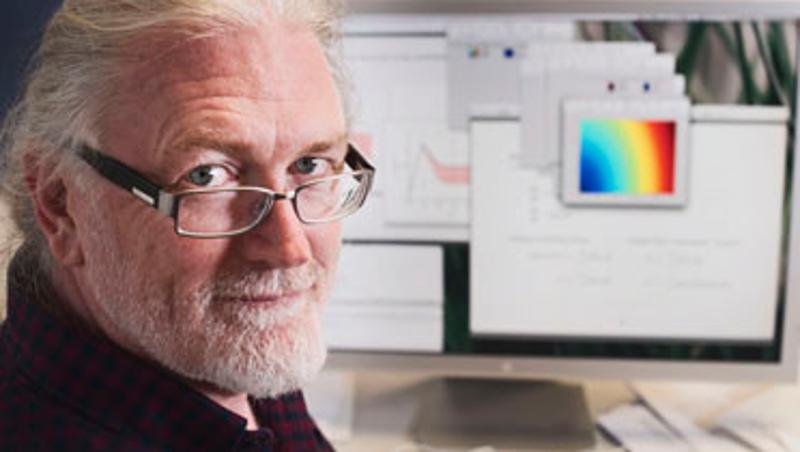
Understanding the way our bodies heal is not as easy as 1, 2, 3. But a Queensland University of Technology (QUT) researcher believes mathematics holds the answers to complex biological problems.
Professor Graeme Pettet, a mathematician from QUT's Institute of Health Biomedical Innovation (IHBI), said maths could be used to better understand the structure of skin and bones and their response to healing techniques, which will eventually lead to better therapeutic innovations.
"Mathematics is the language of any science so if there are spatial or temporal variations of any kind then you can describe it mathematically," he said.
Professor Pettet is a member of the Tissue Repair and Regeneration group, which in part focuses on growing skin in a laboratory and analysing its growth and repair process.
His team concentrates on the theoretical material, using data to build and solve mathematical equations.
"Skin is very difficult to describe. It's very messy and very complicated. In fact most of the descriptions that engineers and biologists use are schematic stories (diagrams)," he said.
"Once we understand the structure (of the skin) and how it develops we can begin to analyse how that development impacts upon healing in the skin and maybe also diseases of the skin."
Professor Pettet said his research would, for the first time, formalise the theories about the way cells interact when healing.
"It is clear that by improving our understanding of how the multiple cellular processes work together in a complex but orchestrated way has great potential in leading to therapeutic innovations," he said.
Despite skin being our most accessible organ, Professor Pettet said there was a lot more to learn about how and what made it function.
"There's a lot of structure just in the upper layer of the skin despite the fact it's only a few cells thick," he said.
"This can be characterised by how the cells function and change appearance, but what drives them to be that way is not completely known.
"My job is to try and understand and develop ways to describe how the bits and pieces everybody knows about are somehow connected."
Professor Pettet is also working on applying similar techniques to figure out how to show how small, localised damage at the site of bone fractures can impact on healing.
While the long-term goal of understanding and being able to predict how our bodies heal is still a way off, Professor Pettet's research is opening up a realm of biological problems where mathematical equations and techniques that have not previously been applied, are providing insights into the biology as well as the maths.
"We've discovered essentially new sets of solutions in these contexts and that's led onto other projects looking at new mathematical tools to describe these new solutions that we've never seen before," he said.
RELATED ARTICLES
QUT signs Deadly Maths deal with Victoria
Maths helps unlock secrets of Parkinson's disease
QUT technology offers remarkable healing touch
Media contact: Alita Pashley, QUT media officer, 07 3138 1841 or alita.pashley@qut.edu.au


